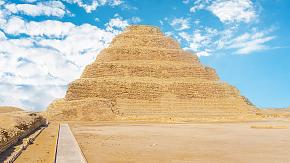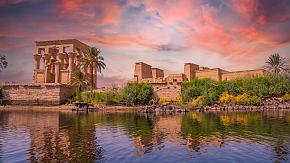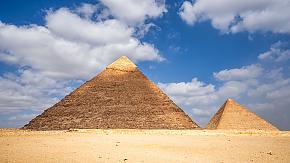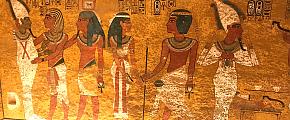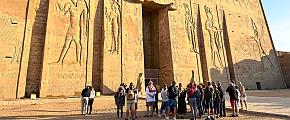FAQs to the Incredible Pyramids in Egypt
Pyramids are among the most impressive structures built by humans in ancient times, and many of them still survive today, so we all have the chance to explore them. What's the first thing that comes to your mind when you think of pyramids? For most people, it is "Egypt". The reason is that Egypt is the place where pyramids originated and where the most famous pyramid, the Great Pyramid of Giza, lies. While Egyptian pyramids are still very mysterious to many people, here I summarize the answers to several most frequently asked questions about the Egyptian pyramids to demystify them. Hopefully, you will get an insight into the what, when, where, why, and how.
What are the pyramids?
Geometrically, a pyramid is a structure with its outer surfaces being triangular and converging to a single point at the top. So its shape is roughly a pyramid in the geometric sense. Its base can be trilateral, quadrilateral or polygonal. But the most common version is the square pyramid which has a square base and four triangular outer surfaces.
Many Civilizations in the world have built pyramids, such as Mesopotamia, Egypt, Sudan, China, Roman Empire, etc. But the most famous pyramids are the Egyptian pyramids, with some among the largest structures on Earth, including the Great Pyramid of Khufu, the only one of the Seven Wonders of the Ancient World still remaining.
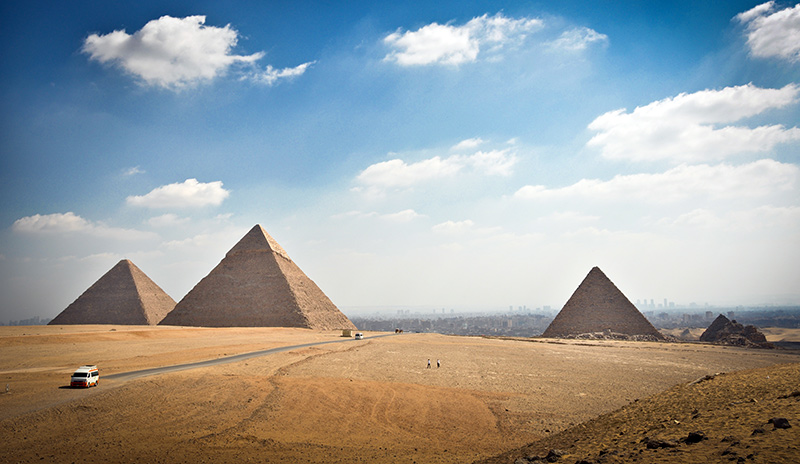 The incredible Giza pyramid complex. Photo credit: Odynovo guest Gene Tobia.
The incredible Giza pyramid complex. Photo credit: Odynovo guest Gene Tobia.
Why were the Egyptian pyramids built?
The pyramids were built as tombs and monuments for the pharaohs and their queens. Pharaoh is the common title of the monarchs of ancient Egypt.
In ancient Egyptian society, religion was central to everyday life, and pharaohs played a unique role. The Egyptians believed that the pharaohs have been chosen by the gods to serve as the intermediary between the gods and the people on earth. Thus pharaohs deputized for the gods and had two roles, namely civil administrator and religious administrator. Because of this, the ancient Egyptians were interested in keeping the pharaohs' majesty intact even after his death. They believed that when a pharaoh died, part of his spirit remained with his body. In order to take good care of his spirit, his body was mummified and buried in his pyramid, together with everything he would need in the afterlife, including food, gold vessels, furniture and other offerings.
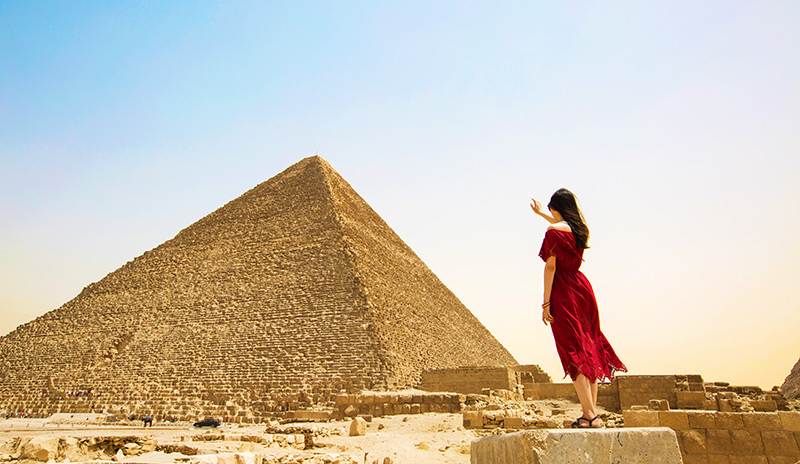 The Great Pyramid of Giza
The Great Pyramid of Giza
When were the Egyptian pyramids built?
Pyramids were built during a time when Egypt was among the world's richest and most powerful civilizations. The pyramid-building period began with the Third Dynasty (c. 2650 – c. 2575 B.C.) and ended roughly at the Sixth Dynasty (c. 2345 - 2181 B.C.). That is to say, most Egyptian pyramids were built throughout the Old Kingdom, which was from the Third Dynasty through the Six Dynasty. No wonder the Old Kingdom is also called "Age of the Pyramids" or the "Age of the Pyramid Builders".
The stepped pyramids
Pyramids were evolved from "mastabas", flat-roofed rectangular structures used for royal tombs from the beginning of the Dynastic Era (2950 B.C.). The earliest known Egyptian pyramid was built around 2630 B.C.–2611 B.C. in Saqqara for Djoser, a pharaoh of the Third Dynasty. It is the Pyramid of Djoser, also known as the Step Pyramid as it composed of a number of "steps" that decreased in size towards its apex. It was designed probably by Imhotep, a priest and healer at that time. It was the tallest building of its time, reaching a height of 62 meters (204 feet), and was assembled with six stepped layers of stone which were designed to serve as a gigantic stairway. It was believed that by these steps, the soul of the deceased pharaoh could ascend to the heavens. After that, the stepped pyramid became the norm for royal burials.
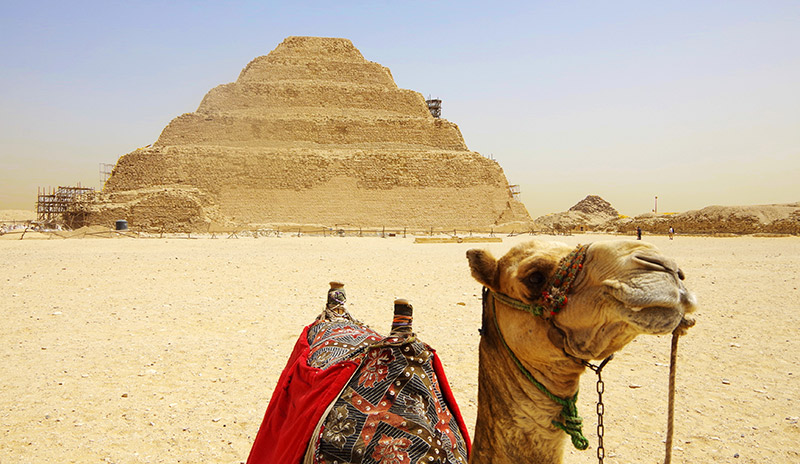 The Step Pyramid not far away from Cairo City
The Step Pyramid not far away from Cairo City
The smooth-sided pyramids
The earliest pyramid with smooth sides rather than steps was the Red Pyramid at Dahshur, which was built for Sneferu (c. 2612-2589 B.C.), the first pharaoh of the Fourth Dynasty. Its core was constructed with red limestone blocks, and hence its name.
The peak of the Egyptian pyramid building
The peak of pyramid building has coincided with the greatest degree of absolutist rule. During this most prolific phase, the most famous pyramids, the Giza pyramid complex, were built.
 The Great Pyramid and Great Sphinx of Giza
The Great Pyramid and Great Sphinx of Giza
The end of Egyptian pyramid-building period
Over time, as authority became less centralized, especially in the fifth and sixth dynasties, the pharaohs' power and wealth declined, so their ability and willingness to construct massive-scale pyramids decreased. Thus these pyramids were generally smaller, less well-built and mostly hastily constructed.
The last great pyramid was built for Pepy II (2278-2184 B.C.), the second pharaoh of the Six Dynasty. By the time of Pepy II's rule, the prosperity of the Old Kingdom was dwindling, and he had lost some of his quasi-divine status as the non-royal administrative officials' power grew. So his pyramid was much shorter (172 feet) than others of the Old Kingdom. The kingdom and strong central government virtually collapsed with the death of Pepy II, and Egypt entered into a turbulent phase named the First Intermediate Period.
Later pharaohs returned to build pyramids during the Middle Kingdom phase, but no pyramid could compare with the Great Pyramids in terms of scale.
How many Egyptian pyramids are identified in Egypt so far?
As for this question, there are arguments: either 118 or 138 is cited as the number of identified Egyptian pyramids as of November 2008. Most of them were built during the Old and Middle Kingdom periods.
As some pyramids are buried by desert sands, and some are in a poor state of preservation and look like mounds of rubble, so archaeologists are continuing to identify previously unknown pyramids.
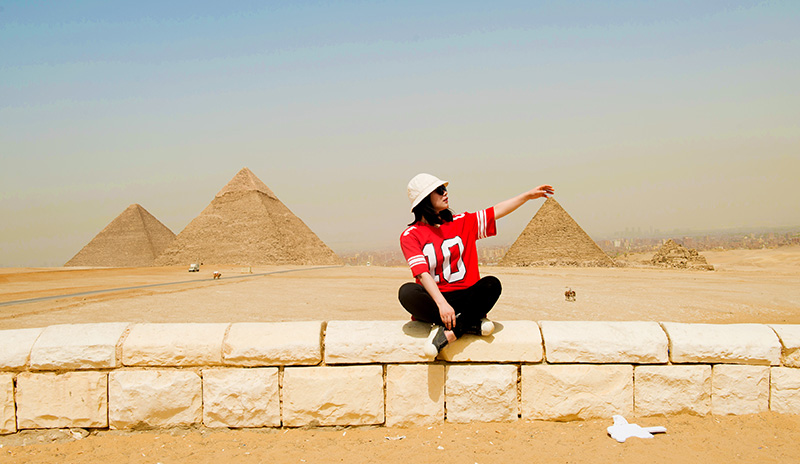 A distant view of the Giza pyramid complex
A distant view of the Giza pyramid complex
Where are Egyptian pyramids located?
Almost all Egyptian pyramids are sited on the west bank of the Nile River and grouped together in a number of pyramid fields. From north to south geographically, the most important fields are Abu Rawash, Giza, Zawyet el-Aryan, Abu Sir, Saqqara, Dahshur, Mazghuna, Lisht, Meidum, Hawara, el-Lahun, El-Kurru and Nuri.
How were the Egyptian pyramids built?
It has been a mystery that archeologists have been trying to solve for many years. While according to the latest discoveries, archeologists finally discovered how materials like limestone and granite were transported from the quarries to the pyramid fields. These discoveries show that the materials were transported along the Nile River rather than overland transport. A ceremonial boat was believed to be loaded with the materials, floated down the Nile River, and stopped right at the construction site of pyramids. A papyrus scroll discovered along the boat revealed the processes in building the Great Pyramid at Giza. A system of now empty waterways discovered below the Giza plateau was believed to be connected to the Nile River and used to deliver the materials.
Of course, there are other speculations. One is that the quarried stone blocks were transported to the construction site by wooden sleds. And the sands in front of the sled were wetted by water to reduce friction.
Nevertheless, there is no doubt that the construction of pyramids costed a large quantity of labors and materials.
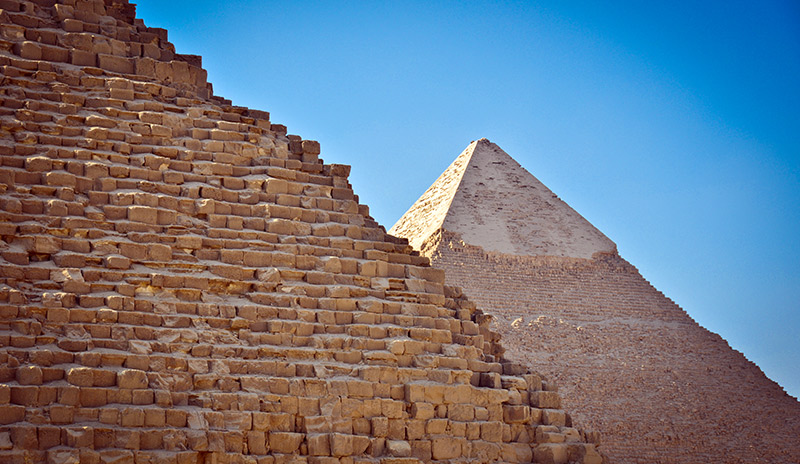 A close view of the Giza pyramid complex. Photo credit: Odynovo guest Gene Tobia.
A close view of the Giza pyramid complex. Photo credit: Odynovo guest Gene Tobia.
What's inside the pyramids?
For most pyramids, the burial chambers were under the structure. But for some pyramids, like the Great Pyramid, the burial chambers were inside the structure. Near the pharaoh's chamber would be other rooms where his family members and servants were buried. Besides, there were often other small rooms, which were used as temples or storeroom, and narrow corridors and passageways leading to outside. The walls of the chambers often covered with carvings and paintings.
There were also many false chambers, corridors and passageways, which were likely used to confuse tomb robbers and protect the pharaoh's chambers.
As the pyramids were intended to protect the pharaohs' bodies after their death, mostly, there was a sarcophagus made of heavy stone in each pyramid, which was used to protect the pharaoh's mummy. And to help the pharaoh in his afterlife, many valuable treasure and items were buried with the pharaoh, such as food, clothing, wooden statues, stone carvings and other luxury items.
Take the Great Pyramid of Giza for example, we can know its structure from the picture below: 1 - Entrance. 2 - Descending Passage. 3 – Subterranean Chamber. 4 – Ascending Passage. 5 – Horizontal Passage. 6 – Queen's Chamber. 7 – Air Shafts. 8 – Grand Gallery. 9 – King's Chambers. 10- Relieving Chambers.
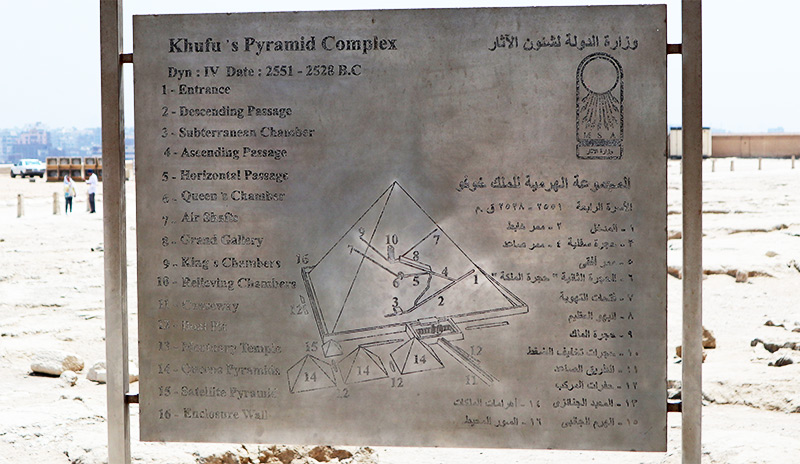 A schematic diagram of the Giza pyramid complex
A schematic diagram of the Giza pyramid complex
With this information, I believe you have a better understanding of the Egyptian pyramids. A tailor-made tour to explore the pyramids will help you to get a deep insight into these incredible masonry structures.
What Our Clients Say
Explore the latest verified reviews of Odynovo's travel services on Tripadvisor, Google, Trustpilot, Product Review and more trusted platforms.

